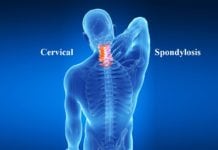Spondylolisthesis is a serious and painful disorder of the spine characterized by a displaced vertebra that puts pressure on the surrounding nerves, tissues and vertebrae. This spinal condition can be debilitating if the pressure is severe or the position of the vertebra prevents normal movement of the spine. Spondylolisthesis has a number of causes, including:
• Stress fractures
• Arthritis
• Infections
• Injuries and accidents
• Deterioration due to age or overuse
• Congenital birth defects
Depending on the location of the displaced vertebra, patients typically experience symptoms that include:
• Severe back pain
• Stiffness or immobility
• Pain in the buttocks or legs
• Difficulty in standing, sitting or walking normally
• Numbness or weakness in the legs or hips
• Increased pain when turning, bending or moving
• Decreased control of bladder and bowels
Most patients experience one or more of these symptoms. In rare cases, spondylolisthesis may not produce any noticeable symptoms at all.
Diagnosing Spondylolisthesis
X-rays are generally used to diagnose spondylolisthesis and can help doctors pinpoint the source of the pain and the problem. While the displaced vertebra is usually easy to identify, determining the reason for the displacement may require the use of CT scans or MRI imaging techniques. These advanced imaging systems can provide valuable information to physicians and other medical personnel in making a diagnosis and deciding on a treatment plan for patients with spondylolisthesis.
Non-surgical Treatments for Spondylolisthesis
Patients diagnosed with spondylolisthesis are often advised to avoid strenuous physical activity. Over-the-counter medication may help to relieve pain and inflammation, but some patients may require prescription medications to control their pain effectively. Depending on the severity of the displacement, physicians may adopt a conservative approach that combines pain management and reduced activity. This strategy is intended to give the spine time to heal. Anti-inflammatory and pain relief medications may also be injected directly into the affected area to provide more effective control of back pain when other methods have failed. Some patients with spondylolisthesis can benefit from physical therapy sessions to relax and strengthen the muscles of the back. A back brace may be recommended to provide extra support.
Surgical Techniques
If spondylolisthesis does not respond to conservative treatments, it may be necessary to perform surgery to correct the displacement of the vertebra and relieve the pressure on tissues, other bones, and nerves in and around the spinal column. Spinal fusion and decompressive laminectomy are the most common types of surgeries performed to treat spondylolisthesis.
• Spinal fusion uses bone graft technology and advanced surgical techniques to fuse two vertebrae together, holding both in place and creating a new bone structure that prevents the displaced vertebra from returning to its misaligned state. This surgical procedure stabilizes the spine but may reduce mobility and flexibility in the affected area.
• Decompressive laminectomy removes a portion of the displaced vertebra to relieve pressure and pain at the site. This procedure can often provide significant pain relief for patients suffering from spondylolisthesis.
Minimally invasive surgical techniques can allow faster recovery times for patients who undergo these procedures.
In all cases of chronic or severe back pain, it is essential to seek the advice of a qualified medical professional. Early detection is often the key to full recovery, so individuals who suspect they may have spondylolisthesis or any other spinal disorder should consult a physician for diagnosis and treatment.





























